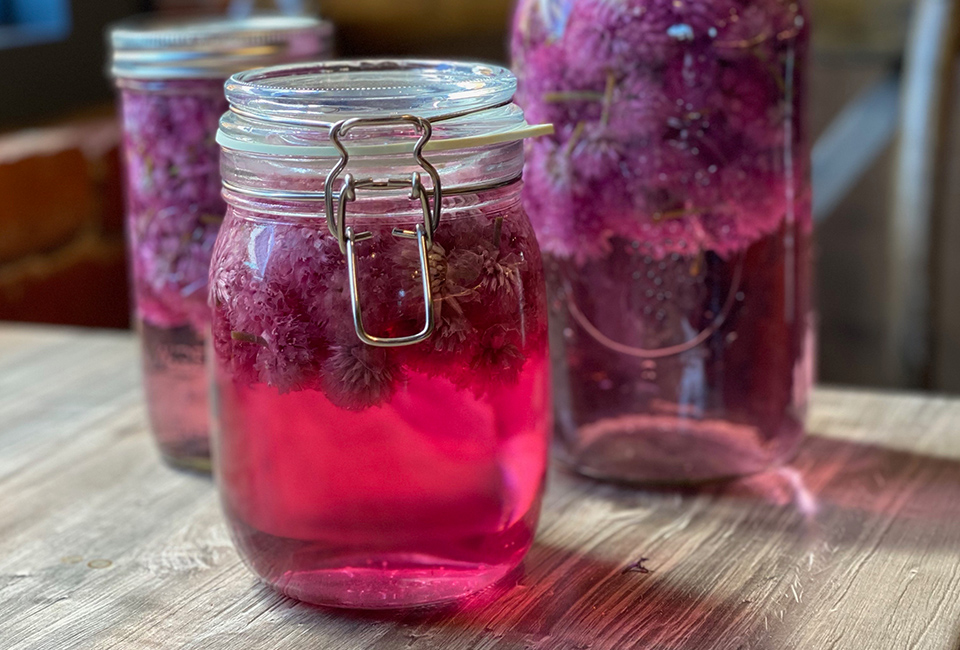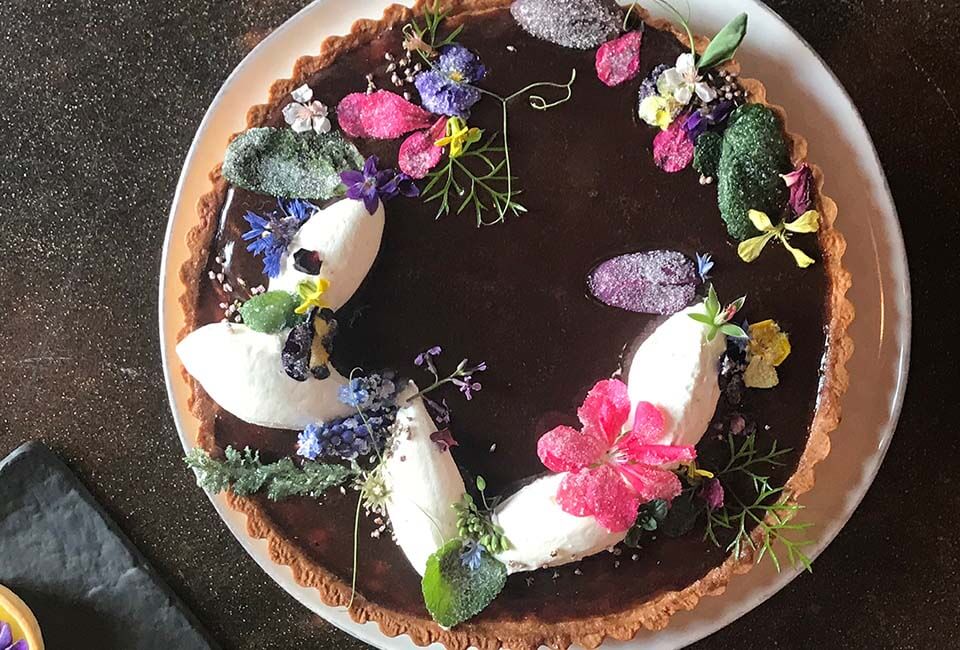
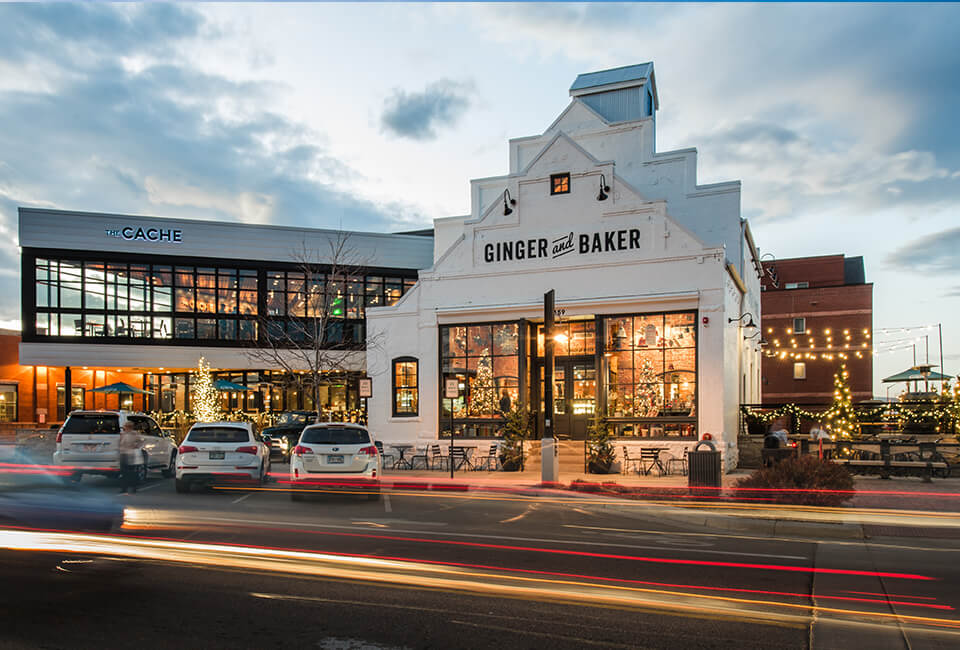
I admit it, I’m a sucker for before and after pictures. Just the title “before and after” creates a sense of anticipation. Before and after creates a way to peek into someone else’s life and see what’s possible; to see approaches you hadn’t thought of or might not have had the courage to try.
When I lived in Silicon Valley, I spent a bit of time vicariously living through my neighbors’ major home and yard renovations. I had two horses at the time and though there was open space for riding, I spent most of my time riding down streets and through neighborhoods in the hills and valleys around Los Altos. It was a perfect way to see over fences and barriers to observe home makeovers and landscaping improvements. I loved watching an old house get a facelift. I saw all kinds of plant material and architectural elements that were new to me. I watched neighborhoods change and spaces emerge that brought new beauty and function to the families and communities who invested in them.
Before and after photos provide physical proof of what time, money, vision and elbow grease can do!
At Ginger and Baker, we love showing the before and after pictures of the renovation of our old mill. It’s hard to describe the state of disrepair in which we found the historic building. And although I fell in love with it, we talked about it as if it was a grande dame in decline. “She’s seen better days.” “She’s got some good bones, but she’s sure showing her age.”
It makes me think of my grandmother who always found a compliment for everyone, but sometimes ended with that faint praise of “bless her heart.” She’s a pretty old building, but she’s got some troubles, bless her heart. Our early 1900’s building had potential, but she needed some work!
Market
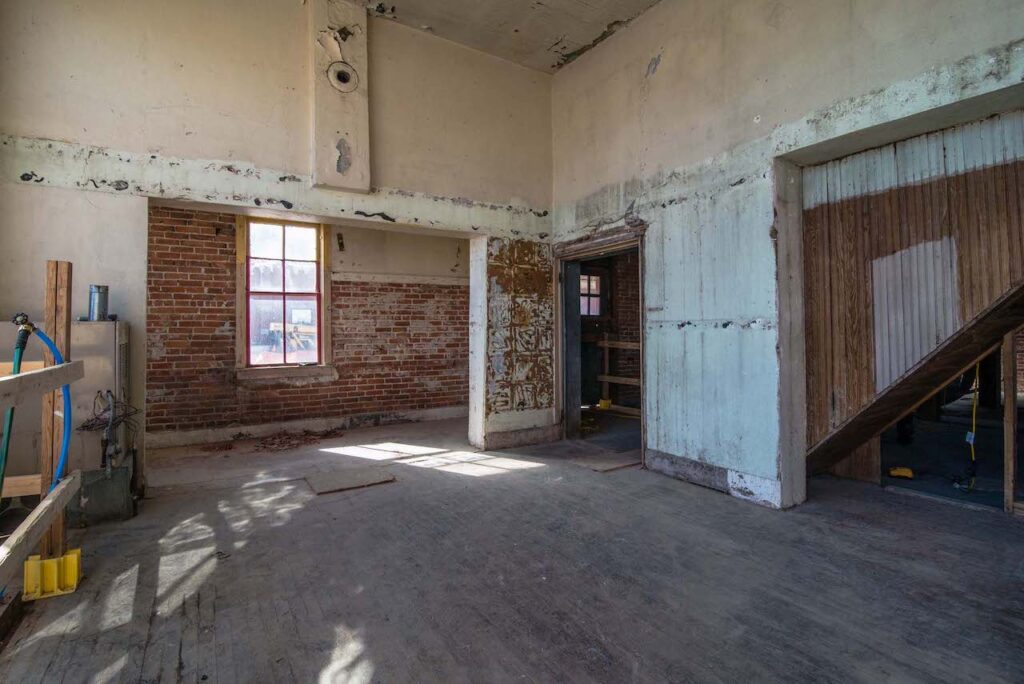
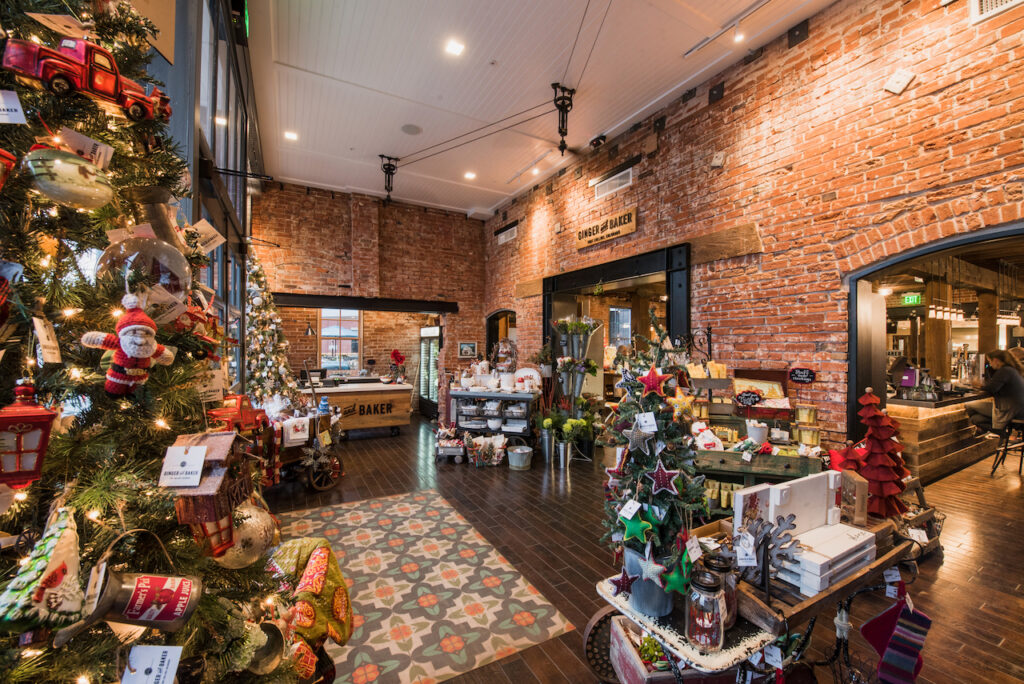
When first entering the building, the brick walls were covered with stucco and wood planks, with a large set of stairs blocking the center doorway. We didn’t know how large the opening was behind the wood, nor did we realize an original wood beam was in place above the door. It took hard work and a patient crew to expose the original brick walls, arched doorways and high ceilings. We kept the function of the front room as a retail store with the counter in the exact same place as it had been in the old feed store. Even the original steel stand for the scale remains bolted to the floor inside the window.
Coffee Shop
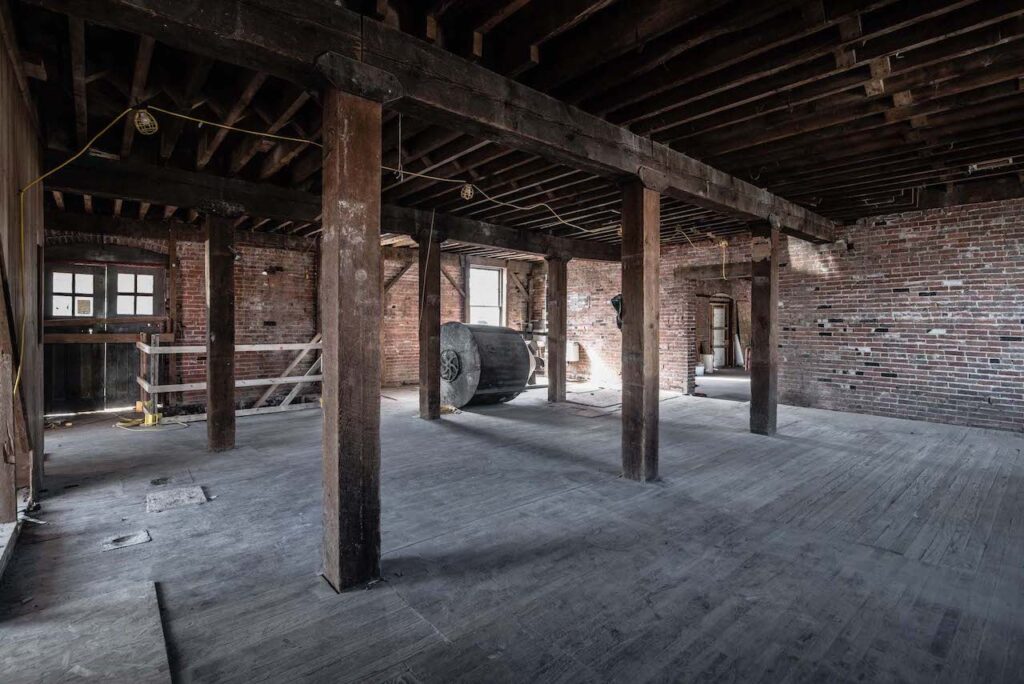
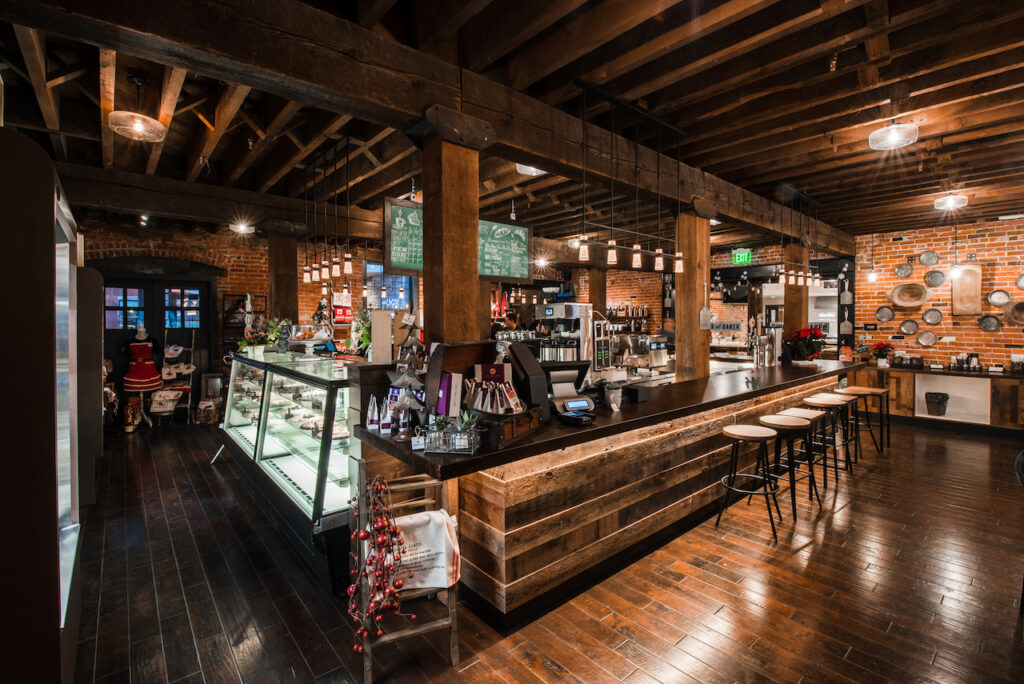
Now the Coffee Shop, the main room inside the mill was once used for mixing and bagging feed. There was a large grain bin on the south wall and “legs” or belts with scoops that moved through this room, transporting grain from the wooden bins above to the mixer. If only those original posts and beams could talk! (We did leave the graffiti scribed in the wood throughout the years.) We still have the designated wooden stick that was used to bang the ceiling in an effort to dislodge stuck grain. You can see the dents in the original wood ceiling testifying to the efforts of the employees to get the soybeans to move!
The Milltop
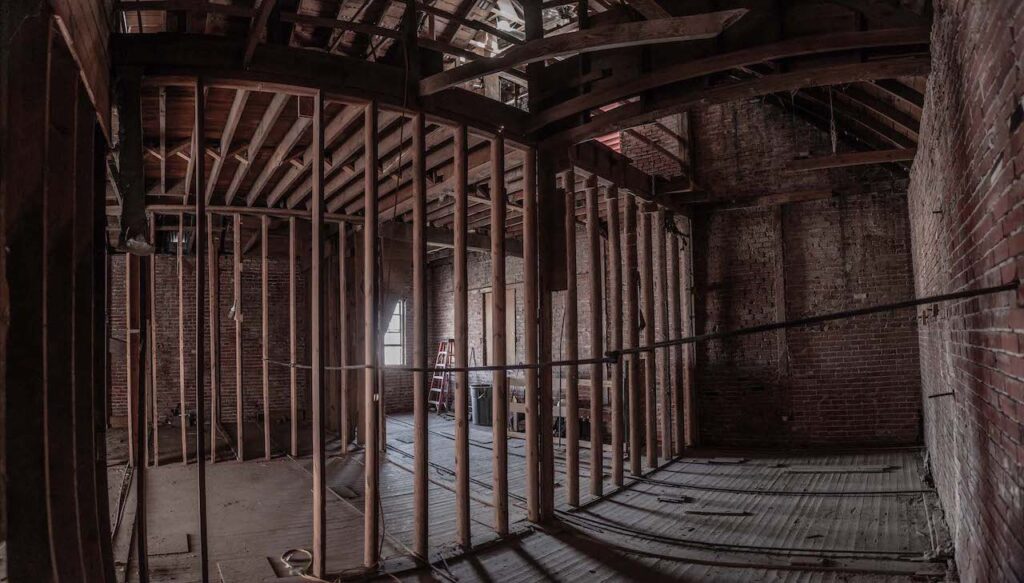
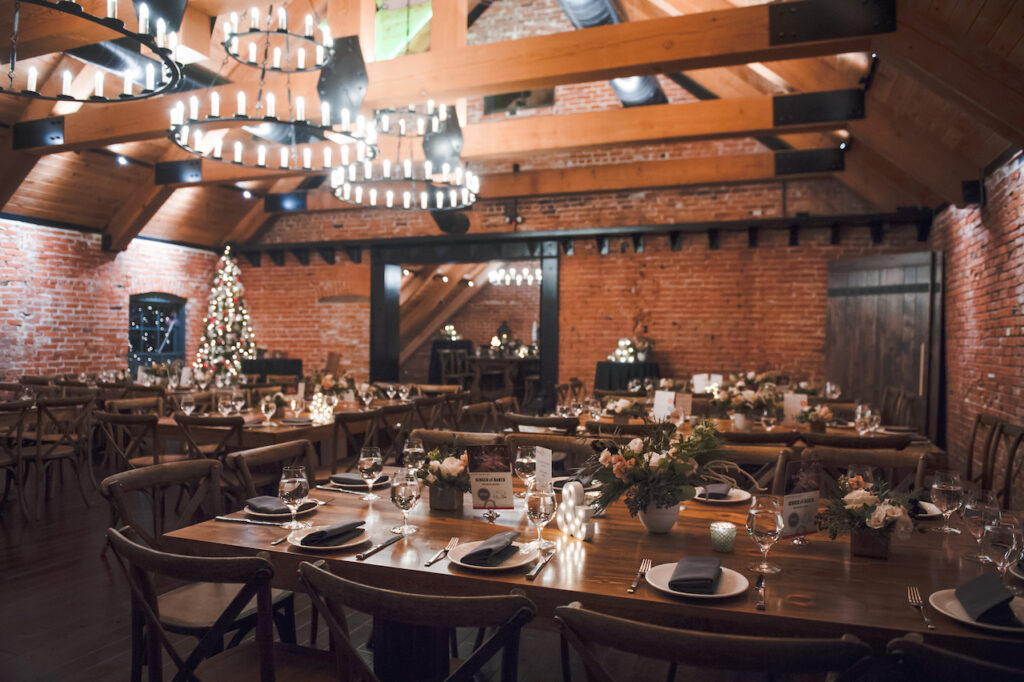
Large wooden grain bins filled the entire second floor of the mill. As we removed the wood sides, the building’s structure became visible for the first time. Damaged through the years due to a leaky roof, the brick walls were loose and we found areas where you could see all the way outside through gaps in the brick! Historic repointing (putting grout between the bricks to hold them together) was required as was a new steel frame to stabilize the building. Giant wood trusses were installed and iron chandeliers hung to create an event space like no other.
Catwalk
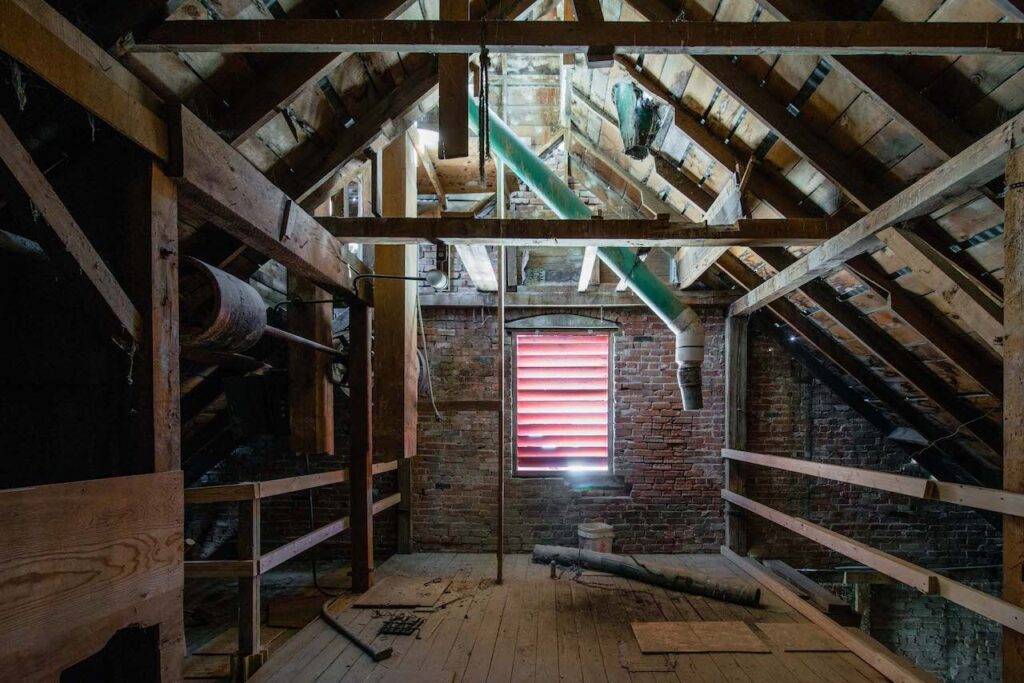
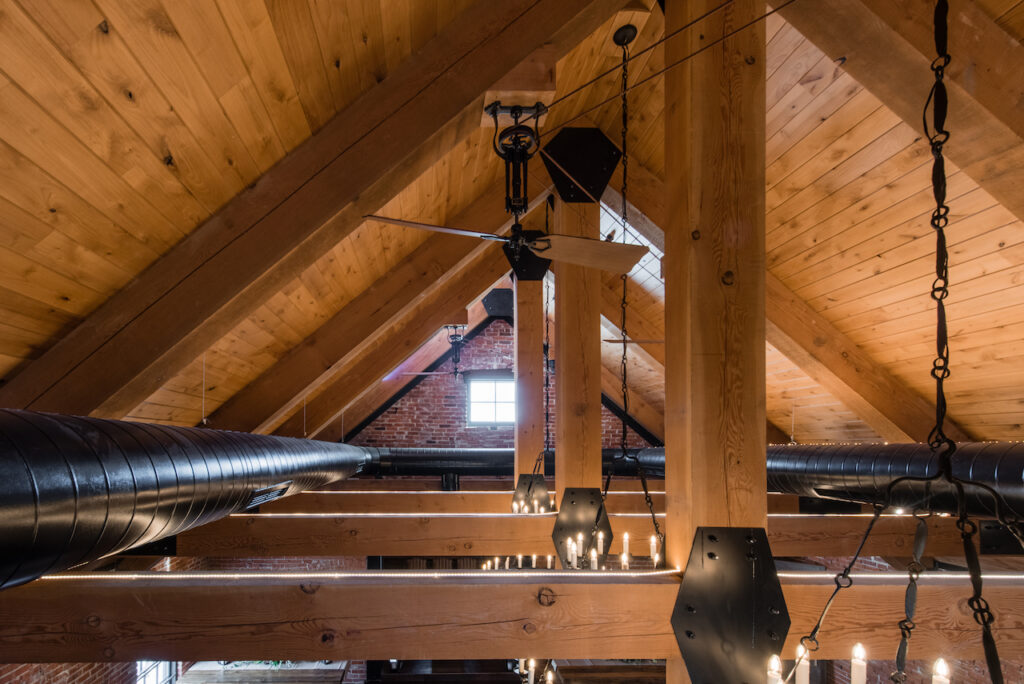
Up high in the bat wings of the mill, a narrow wooden catwalk allowed the mill workers to walk the length of the building and direct grain to the appropriate bin, using an auger system hung 35 feet in the air. The large pulleys and wheels were removed, wooden shutters were returned to historically accurate open windows and the catwalk was removed to open the full expanse of the ceiling.
Wine Cellar
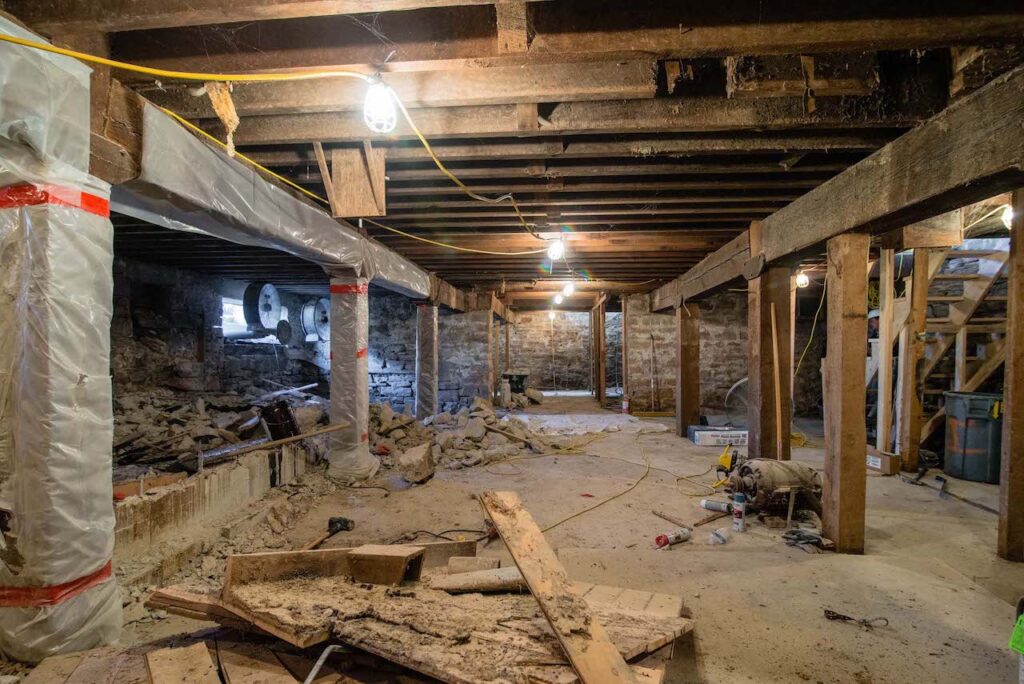
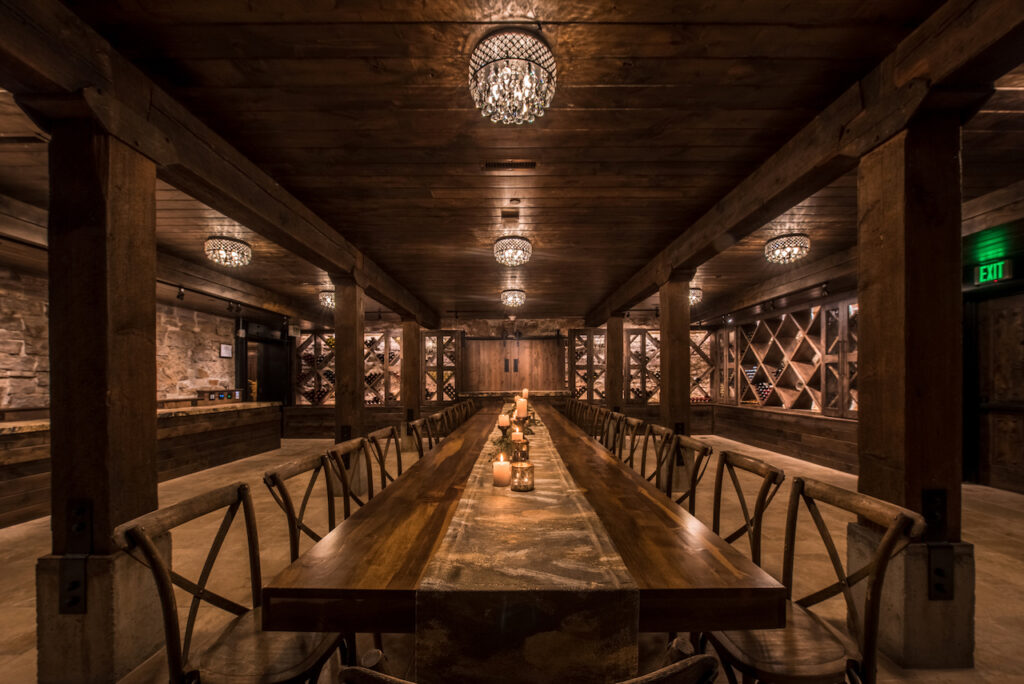
Navigate a steep ladder into the basement of any old feed mill and you’ll find things you may wish you hadn’t! We removed an old molasses pit (think of it as a smaller version of the La Brea Tar Pits), an old boiler, long-ago abandoned equipment, heavy steel wheels and so many more dusty parts… all of which helped run the mill. The whole building had to be jacked up about three inches as it was sinking, giving way to time and moisture. By digging out the floor by about 3 1/2 feet, the room became a comfortable space for entertaining. We left the original stone block walls of the foundation exposed along with the original post and beams. Today, the wine cellar is one of the most remarkable rooms in the building and houses over 1200 bottles of wine.
The before and after photos tell the story of a building rooted in Fort Collins for over 100 years. Now that renovation is said and done, we are happy to say the old girl dressed up pretty darn good… bless her heart!
